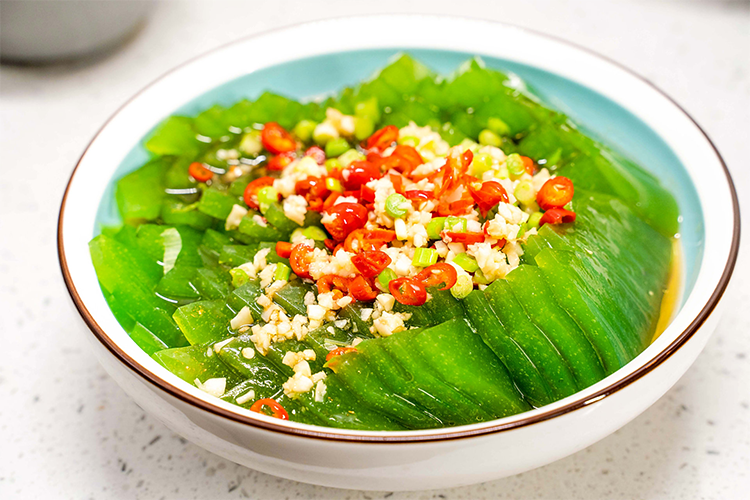Taishun Guanyin Tofu: Zhejiang’s Emerald Wild-Leaf Delicacy
Discover Taishun Guanyin Tofu—an emerald-green specialty from Zhejiang made not from soy but from the wild “fubi” shrub leaves. This unique delicacy, prized for its silky, jelly-like texture and fresh mountain aroma, is both a cooling summer snack and a living piece of local culture. Listed as Zhejiang provincial intangible cultural heritage, Guanyin Tofu offers travelers a taste of rural wisdom and legend.
1. Origin Legend: Guanyin’s Dew and the Miracle Leaf
Local lore says Guanyin Tofu was born in a time of drought. According to the legend, the compassionate Bodhisattva Guanyin appeared in villagers’ dreams and pointed them to a wild shrub called “fubi.” Villagers pressed the young leaves with spring water and found a green, gelatinous mass that set into a delicate tofu-like block. They named it Guanyin Tofu in gratitude. This myth highlights the traditional Chinese idea of relying on the mountain for sustenance and adds a spiritual dimension to the dish.
2. A Wild Gift: Identifying the Fubi Leaf
The essential ingredient is the fubi leaf (locally known), a wild shrub that grows at 500–800 meters elevation around Taishun. Harvested in late spring and early summer, the leaves are oval, supple, and scented with a fresh vegetal aroma. Correct identification is vital—some similar-looking plants can be toxic. Genuine fubi releases a sticky green juice when rubbed; that natural pectin-like substance is what later forms the tofu. Because this ingredient is wild-harvested, every batch keeps the taste of the mountains.

3. Craftsmanship: Turning Leaves into Tofu
The traditional process is an eco-wise craft. Leaves are washed thoroughly, then repeatedly rubbed and squeezed in warm water to extract a thick green liquid. The pulp is strained through fine cloth to yield a clear jade-green juice. Artisanal makers add an alkaline coagulant—traditionally ash made from certain trees—to gently set the liquid. After half an hour the mixture firms into a trembling, semi-transparent block. No modern additives are used: the texture and firmness come from plant gelatinization reacting with the alkaline agent.
4. Flavor Profile: Fresh and Silky Harmony
Guanyin Tofu looks like deep jade and feels cool and springy to the knife. It is firmer than regular soy tofu but softer than konjac, offering a jelly-like bite that melts on the tongue. The first impression is clean, herbal freshness; a faint vegetal bitterness gives way to a mild, lingering sweetness. This layered taste—cool, green, and subtly complex—makes it an ideal summer refreshment and a memorable regional flavor.

5. Versatile Ways to Eat: From Cold Salads to Stir-Fries
- Cold salad classic: Cut into cubes and dress with soy sauce, black vinegar, garlic, and chili oil—Taishun’s preferred way to enjoy the clear, fresh flavor. The dressing balances the slight bitterness and highlights the leaf’s aroma.
- Soups: Simmered with pork ribs or shiitake mushrooms, Guanyin Tofu holds shape while soaking up savory broth for a silky soup course.
- Stir-fry innovations: Sliced and flash-fried with shredded pork and green peppers creates contrast—slightly crisp edges with tender centers.
- Sweet variation: Chilled with honey or osmanthus syrup for a surprising dessert option.
6. Where and When to Taste It
The best season is May through September, when fubi leaves are freshest. Early mornings at Taishun’s traditional markets (for example, Luoyang Central Market) often offer freshly made Guanyin Tofu. For a deeper experience, visit local farm-stays in Sixi or Shiyang towns where hosts make tofu on the spot and may offer hands-on demonstrations. During Guanyin’s birthday (lunar February 19), folk events often include ritualized, traditional preparations.

7. Travel Tips: Plan Your Taishun Food Journey
- Getting there: Taishun is about a 2.5-hour drive from Wenzhou with scenic mountain views along the way.
- Pairings: Try it with local radon spring tea and smoked cured pork for an authentic Taishun tasting menu.
- Culture stops: Visit the ancient covered bridges and villages to connect the food with regional farming culture.
- Souvenirs: Vacuum-packed Guanyin Tofu powder or reconstitutable kits are available for travelers to take home.
- Health note: People with cold constitutions should eat it in moderation; versions set with wood ash aren’t strictly suitable for strict vegetarians.
8. Home Experiment: A Simple At-Home Recipe
For home cooks, fubi leaf powder or Guanyin Tofu powder can be ordered online. A basic method: mix 50 g powder with 500 ml cool boiled water, let hydrate, then stir into 1,000 ml boiling water. After straining and cooling to about 60°C, add a small amount of food-grade alkaline water as a coagulant and let set. While not identical to wild-harvested results, this gives a close approximation of texture and flavor.

Conclusion
Taishun Guanyin Tofu is more than a dish—it’s a mountain story set in emerald jelly. From its mythic origin and wild-leaf ingredient to its delicate texture and multiple preparations, it embodies Zhejiang’s rural ingenuity and seasonal living. When you visit Taishun, tasting Guanyin Tofu is a sensory way to connect with local legend, craftsmanship, and the highland landscape itself.


